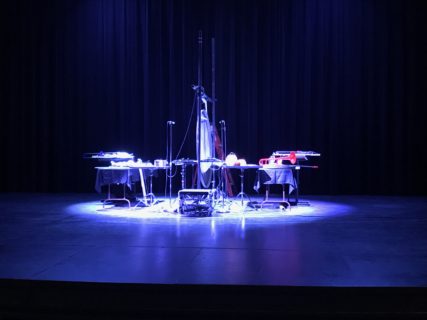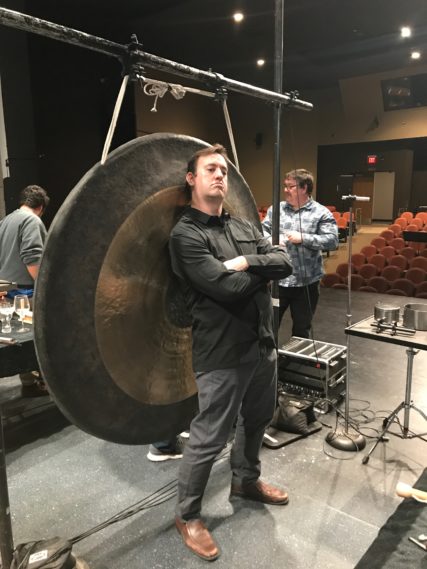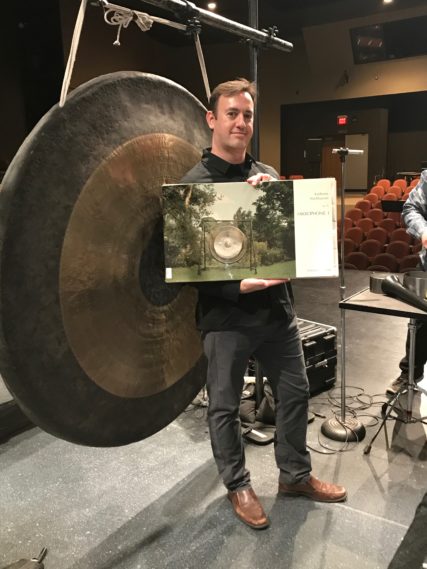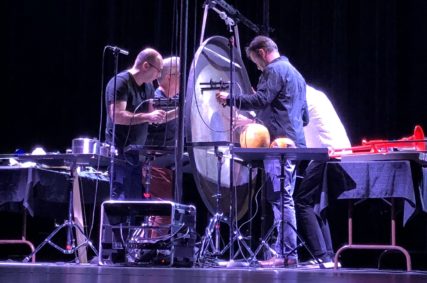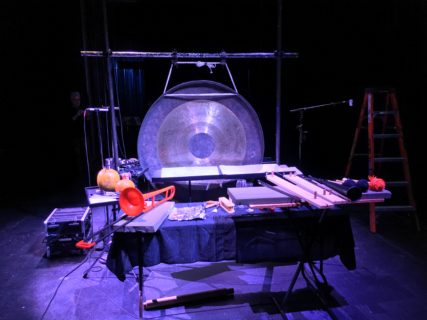Stockhausen’s “Mikrophonie I”
Thanks to a Maricopa County Community College District (MCCCD) grant, we were able to secure funding to perform Karlheinz Stockhausen’s colossal work, Mikrophonie I. The score calls for a 5-foot diameter tam-tam (which the grant paid for), as well as two percussionists, two directional microphones, and two filters.
The form:
The piece uses ideas such as moment form and polyvalence in which the score contains a framework for the macrostructure, and the detailed musical material is written but not put in any order by the composer. It is up to the performers to use the relational instructions in the score in order to place the musical material into the macrostructure in order to create their realization of the work. Stockhausen uses some familiar thematic ideas throughout the work but in an unconventional way since they are potentially non-linear. Compare this with, say a Beethoven sonata, in which you hear a thematic idea early in the work and it is later developed and manipulated throughout the piece in a logic, linear way.
The sounds:
Two percussionists do the majority of playing on the tam-tam while two other players are manipulating directional mics in two dimensions: mic distance from the source of the sound (the implement) and mic distance from the surface of the tam-tam. These microphones are then filtered by sometimes using resonating objects and by two additional players controlling the band-pass filtering and spatialization. Stockhausen also gives over 30 descriptors to be interpreted by the performers for how to produce sounds on the tam-tam.
